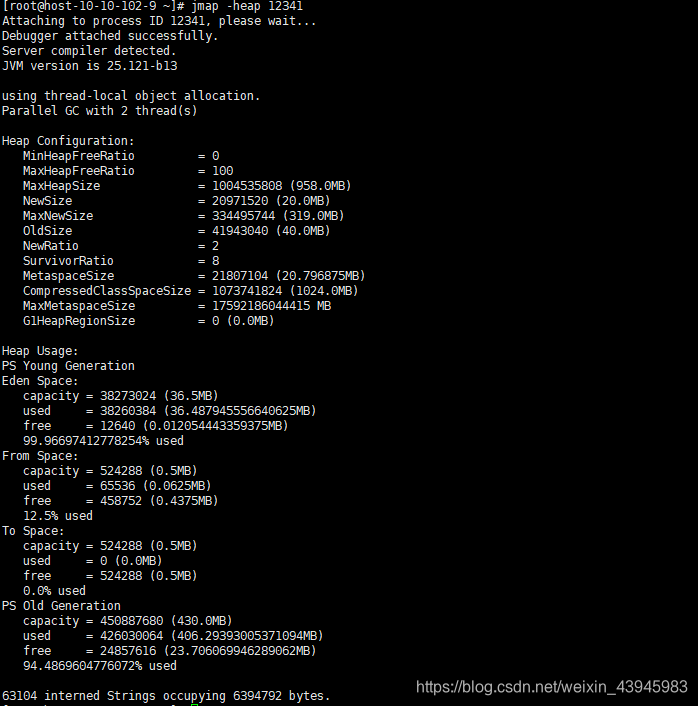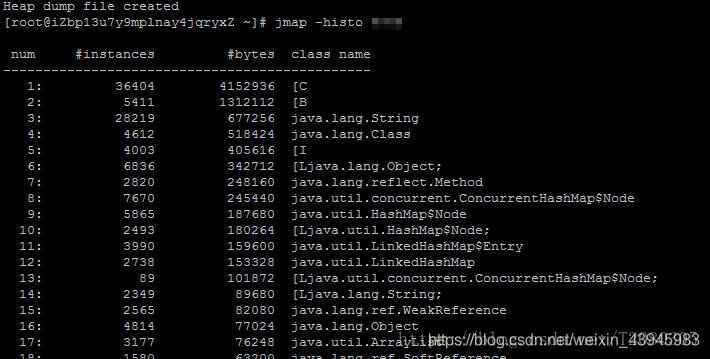1.查看当前java进程的pid
1 | pgrep -lf java |

2.查看java堆的详细信息
1 | jmap -heap PID |

3.查看java堆中对象的相关信息
包含数量以及占用的空间大小
1 | jmap -histo PID |

4.查看监控 heap size 和 jvm垃圾回收情况
尤其是gc情况的监控,如果老年代发生full gc
那么很可能会导致内存泄漏的可能性
1 | jstat -gcutil pid |

属性参照:
- S0: Survivor 0区的空间使用率 Survivor space 0 utilization as a percentage of the space’s current capacity.
- S1: Survivor 1区的空间使用率 Survivor space 1 utilization as a percentage of the space’s current capacity.
- E: Eden区的空间使用率 Eden space utilization as a percentage of the space’s current capacity.
- O: 老年代的空间使用率 Old space utilization as a percentage of the space’s current capacity.
- M: 元数据的空间使用率 Metaspace utilization as a percentage of the space’s current capacity.
- CCS: 类指针压缩空间使用率 Compressed class space utilization as a percentage.
- YGC: 新生代GC次数 Number of young generation GC events.
- YGCT: 新生代GC总时长(从应用程序启动到采样时年轻代中gc所用时间 单位:s) Young generation garbage collection time.
- FGC: Full GC次数 Number of full GC events.
- FGCT: Full GC总时长(从应用程序启动到采样时old代(全gc)gc所用时间 单位:s) Full garbage collection time.
- GCT: 总共的GC时长 (从应用程序启动到采样时gc用的总时间 单位:s)Total garbage collection time.
注:
- full gc很具有代表性
- full gc次数 和时间 指标很能显示系统性能问题
- 这两个指标很大,很大程度上说明了程序中有问题,垃圾一直回收不掉
总结
以上为个人经验,希望能给大家一个参考,也希望大家多多支持IT俱乐部。

